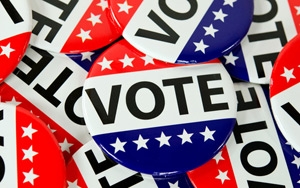 On the heels of Thursday night's GOP debate and with the Iowa caucuses just days away, political campaigns are sharply focused on voter sentiment and audience targeting.
On the heels of Thursday night's GOP debate and with the Iowa caucuses just days away, political campaigns are sharply focused on voter sentiment and audience targeting.
Rubicon Project on
Friday released the findings of a survey of 1,500 likely voters that reveals key insights into voters’ media habits. The findings have the potential to influence how advertising dollars are
allocated to reach voters.
Rubicon found:
TV isn't the dominant medium for voters: Likely voters spend an equal amount of time or more online vs. watching TV. Highly coveted
independent voters are nearly twice as likely to spend more time online than in front of their TV.
Ad skipping is prevalent: Nearly half of all likely voters reported using a DVR for
most of their TV watching and two-thirds report skipping commercials ”all or most of the time” when watching recorded programming.
advertisement
advertisement
Second screens are key: Nearly half
of all likely voters have a second screen on “always or most of the time” when watching TV. About one-third of Baby Boomers have a second screen open always or most of the time while
watching TV.
If voters are online, they turn to video: More than one-third of likely voters report watching online videos daily, with four out of 10 Democratic and independent voters
watching videos daily online.
Gamers matter: Half of all likely voters play games weekly on their mobile devices. More than one-third of likely Democrats and a quarter of
independent voters are gaming daily.
Voters click: More than a third (36%) of those who have seen a political ad have taken a positive action such as clicking through to the content.
Engagement with digital ads on a mobile device is nearly twice as strong, with three in five (64%) of those that have seen a digital political ad on mobile taking action.
Total recall on
digital devices: Nearly a third of the electorate reported being able to recall seeing a specific digital political advertisement so far this cycle.
Rubicon projects that super PACs will
spend more than $10 billion targeting and attempting to engage likely voters over the next 10 months.
“2016 presents a real opportunity for innovation and change in how campaigns and
candidates reach the always connected voter,” stated Dallas Lawrence, SVP, Rubicon Project. “Spending billions of dollars on TV advertising like we have witnessed from candidates and super
PACs for the past 30 years just isn’t going to move the needle this election cycle as much as in the past.”
Lawrence said an important shift is taking place in where and how voters
are spending their time and money -- and ultimately, where they are consuming the content that shapes their voting behavior. "Not only are voters going digital, but our research has shown that when
they view digital content, they’re actually less distracted and more engaged, with three in five of those that have seen a digital ad on mobile taking action.”
Rubicon Project
worked with global polling firm Penn Schoen Berland to conduct 1,500 online interviews among likely voters in the U.S. presidential election. The survey sample included 597 who identify as Democrats,
479 as Republicans and 398 as Independents. The interviews were conducted from Jan. 8 to Jan. 12.